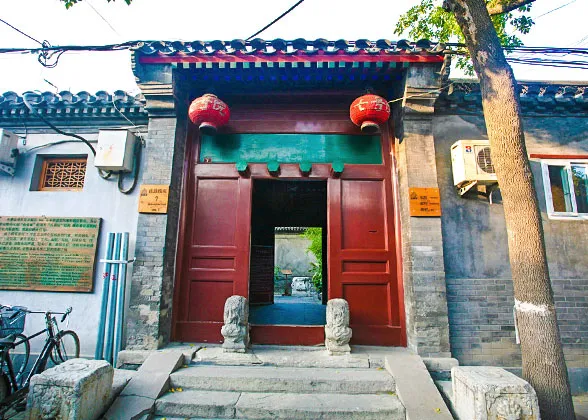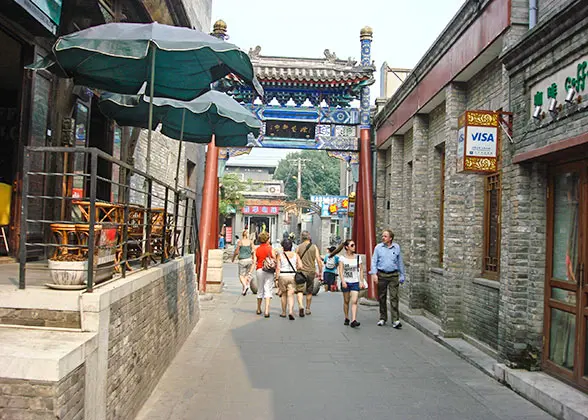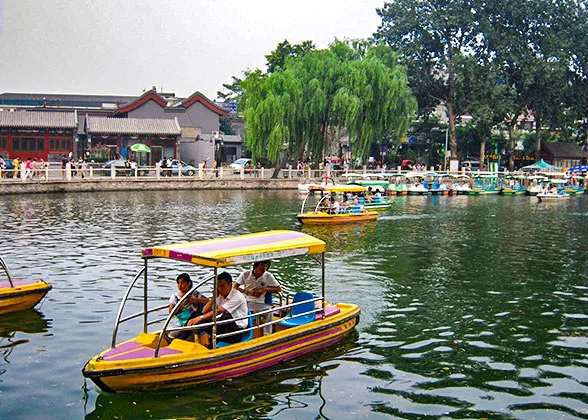Top 10 Famous Siheyuan in Beijing
1. Former Residence of Lu Xun
It is a simple one, full of beautiful flowers, which make the house elegant and colorful. It was a witness to its great master's daily life and monumental deeds. It remains as it was during Lu Xun's habitation. The north house has three rooms: the east and west rooms were the living spaces for his mother and wife, while the middle one was a dining room. Near it is a small house, four square yards, which served as Lu Xun's bedroom and study. The actual furniture he once used, including a bed, desk and wicker chair, is well preserved. The south house is the reception room where Lu Xun had talks with his friends.
Just in there, Lu Xun produced many encouraging works with profound thoughts which greatly influenced the Chinese revolution.
How to get to Former Residence of Lu Xun
1. Take bus 3, 13, 42, 61, 101, 102, 103, 121, 409, 423, or 612, and get off at Fuchengmen Nei.
2. Take bus 19, 21, 44, 387, 618, 691, Te 4, Te 12, or Zhuan 6, and get off at Fuchengmen Bei.
By Subway:
Take Subway Line 2 and get off at Fuchengmen Station. Leave from Exit B and walk forward to Fuchengmen Nei Beijie. Turn left to the residence.
Beijing Bus / Subway Search
| Admission Fee: | Free, but visitors need to take their passports. |
| Opening Hours: | 09:00 – 16:00 (Closed on Monday) |
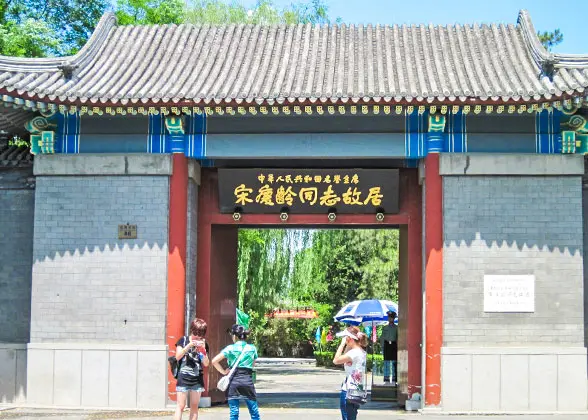 |
| Former Residence of Soong Chingling |
Near the north bank of the Houhai is located Soong Chingling's home, where she spent 18 years of her life, working till the last day. It has been open to public as approved by the State Council in 1982.
It has a quiet and beautiful Siheyuan covering an area of more than 7,722 square yards. Originally, it was Prince Chun's mansion in the late Qing Dynasty (1644 - 1911). The whole residence is surrounded by a small lake and composed of agrand entrance, side hall, two wing-rooms (the east and west), back house, and a newly-built main building. The grand entrance and back house serve as exhibition halls. Over 400 historical pictures and more than 300 precious cultural relics are exhibited to the public, including a group photo of her and her husband, Dr. Sun Yat Sen, the forerunner of Chinese revolution, a photo taken with Chairman Mao during the Chongqing Negotiation and also some personal objects, such as a small pistol she once carried on her hip.
Lying in tasteful surroundings, it is a good place to recall its master – Soong Chingling's great spirit of serving the country and the people.
How to get to Former Residence of Soong Chingling
| Admission Fee: | CNY 20 |
| Opening Hours: | Apr. - Oct.: 09:00-17:30 Nov. - Mar.: 09:00 to 16:00 |
3. Former Residence of Guo Moruo
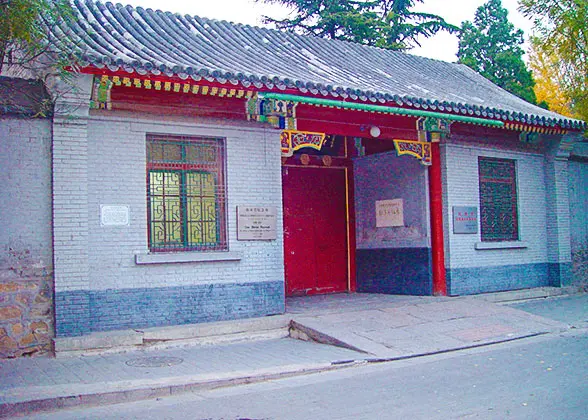 |
| Former Residence of Guo Moruo |
Former Residence of Guo Moruo is located at Qian Hai Xi Jie (west of Front Sea Street), which was open to the public in June, 1988. It houses a large number of Guo Moruo's precious manuscripts and books. There is an earthen mound dotted with trees inside the main entrance. Inside the second gate on the north side, are five rooms that once served as his work rooms and drawing rooms, surrounded by a corridor. The old residence is dense with gingkoes and peonies, which were planted by the Guo couple. On the lawn, sits a bronze stature of Guo Moruo with a contented smile. Inside the Chuihua Gate (the Hanging Flower Gate, which divides the outer court from theinner court), there is a two-courtyard complex, east and west wing-rooms and two rows of main houses connected by corridors. They were Mr. Guo's bedroom, living room and study room. All are exhibited in their original state.
The elegant residence inspired Guo Moruo to write many famous works which are much-loved by their readers. It is really a good place to refresh your minds!
How to get to Former Residence of Guo Moruo
Take bus 3, 13, 42, 107, 111, 118, 612, or 701, and get off at Beihai Beimen (North Gate of Beihai Park).
By Subway:
Take Subway Line 6 to Beihai North and leave from Exit B. After that, walk east for 1 minute and turn north to West Qianhai Street, and then walk for 2 minutes to the residence.
| Admission Fee: | CNY 20 |
| Opening Hours: | 09:00 – 16:30 (Closed on Monday) |
4. Former Residence of Mei Lanfang
If you are a fan of Beijing Opera, you are certainly familiar with Mei Lanfang, one of the four most famous experts in Peking Opera performance. A visit to his old residence will help you better understand his life and the culture of Beijing Opera.
Located in Huguo Temple Street, Former Residence of Mei Lanfang covers an area of 274 square meters. Before Mei's inhabitation, it had only a north room and the east and west wing-rooms. In the front yard, there is a big drawing room. The main house, bedroom and small living room are located inside the second gate. His children lived in the west wing-room, while the east wing-room served as a kitchen and dining room. In 1986 the Mei Lanfang Memorial was built nearby, where you can better know the life of this great master of Peking Opera.
How to get to Former Residence of Mei Lanfang
1. Take bus 55 to Liuhai Hutong, and then walk south for 1 minute.
2. Take bus 3, 13, 42, 107, 111, 118, 612, or 701, and get off at Changqiao Lukou Dong Station. Walk northwards and then turn left into Huguosi Dajie.
By Subway:
1. Take Subway Line 4 or Line 6 and get off at Ping'anli Station. Then get out from Exit B (Northeast Exit) and turn right to Huguosi Dajie. You will see the residence at a small crossroad ten minutes later.
2. Take Subway Line 6 to Beihai North and go out from Exit A. And then walk west for 2 minutes, turn north and walk for 3 minutes to the destination.
| Admission Fee: | CNY 10 |
| Opening Hours: | 09:00 - 16:00 (Closed on Monday) |
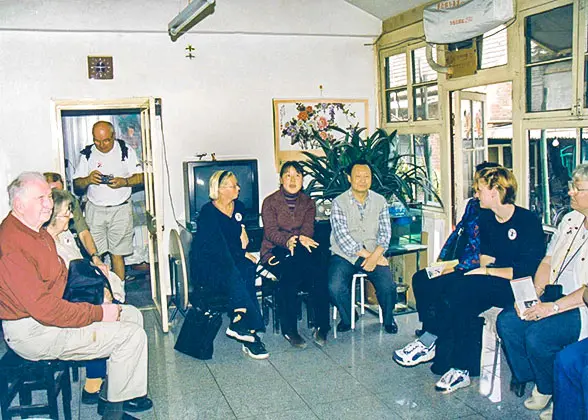 | 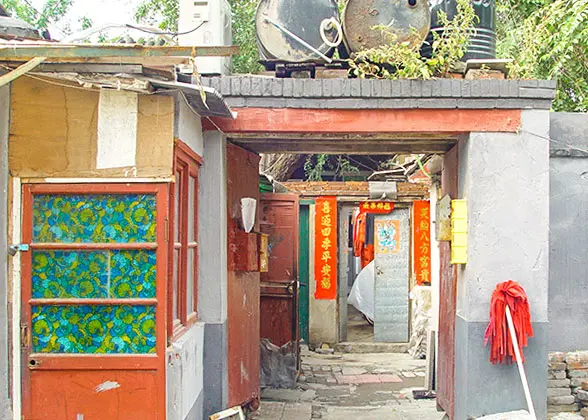 |
5. Former Residence of Mao Zedong (Chairman Mao)
From Sep.19, 1948 to Mar.12, 1919, Chairman Mao was living here while organizing members of the Xinmin Association to go to France to work and study.
6. Former Residence of Li Dazhao
Li Dazhao, one of the founders of the Chinese Communist Party, lived here from 1920 to 1922.
7. Former Residence of Cheng Yanqiu
Cheng Yanqiu, another of the four most famous Beijing Opera actors, once lived here. It covers an area of 151 square meters.
8. Former Residence of Qi Baishi
Qi Baishi was a master of traditional Chinese painting. His residence looks south and covers an area of 79 square meters.
9. Former Residence of Lao She
Lao She was a famous writer in modern times. His residence is appropriately named "Red Persimmon Small Yard" because of its two persimmon trees.
10. Former Residence of Mao Dun
Mao Dun was a great writer in modern times and lived here from 1974 to 1981.
